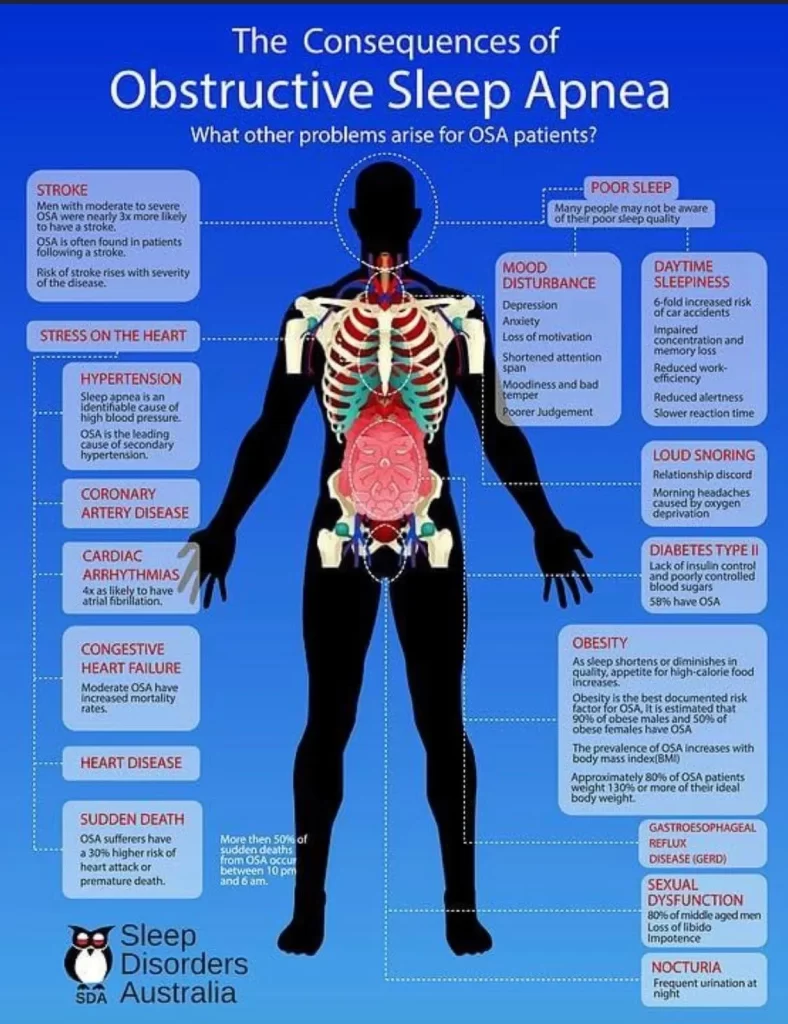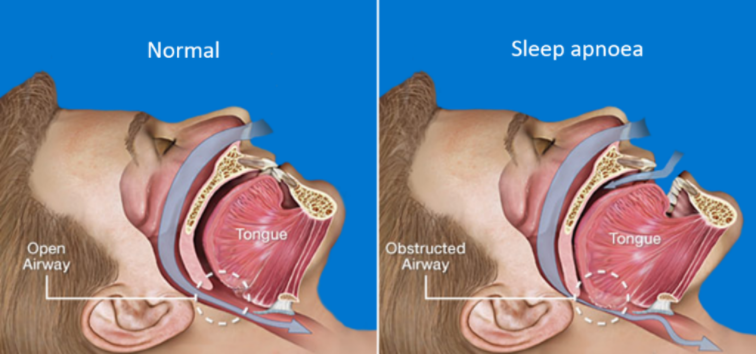Sleep Apnea, Sleep Apnoea – A Condition NOT to be Ignored
August 29th, 2009

Sleep Apnea or Sleep Apnoea
Sleep Apnea is a common disorder nearly as common as adult diabetes. It is thought that one in twenty-five middle-aged men and one in every fifty middle-aged women may have Sleep Apnea and of these less than half are likely to have been diagnosed.

The word “apnea” is Greek and means “without breath”. For people with Sleep Apnea they stop breathing repeatedly for periods of between 5 to 60 seconds or longer and this can happen multiple times per hour. The clinical definition of Sleep Apnea is a cessation of breath that lasts for at least 10 seconds.
This is a good general discussion about Sleep Apnea.
Types of Sleep Apnea
There are three types of Sleep Apnea, these being.
- Obstructive Sleep Apnea where the airway collapses or becomes blocked and restricts breathing,
- Central Sleep Apnea is the less common form of sleep apnea and is where the brain fails to tell the body to breath, or
- Mixed Apnea which is a combination of both Central and Obstructive Sleep Apnea.
Signs and Symptoms of Sleep Apnea
There are no blood or other post event tests for determining Sleep Apnea , and as such Sleep Apnea has tended to go on undiagnosed.
Sleep Apnea is normally diagnosed as a result of comments or complaints from sleeping partners or family who have noticed the gaps in breathing or the excessive snoring.
Untreated Sleep Apnea can increase the risk of high blood pressure, heart attack, stroke, obesity and diabetes. The broken sleep pattern that comes with Sleep Apnea also leads to increased tiredness and decreased awareness in waking hours, with some sufferers experiencing periods of momentary sleep events at times throughout the day.
Other signs and symptoms of Sleep Apnea may include a morning headache, memory lapses, depression or irritable mood swings or personality charges as well as a dry throat when you wake up.
Following video shows an example of a man experiencing an Apnea event, while remaining asleep. Actually stops breathing for 43 seconds, and during that time his heart stops beating for 10 seconds.
Treatment of Sleep Apnea
Once diagnosed Sleep Apnea can be treated and managed. There are a number of options available for treatment of Sleep Apnea that range from surgery to use of a CPAP or Continuous Positive Airway Pressure device, as well as lifestyle changes to mitigate the contributing factors.
